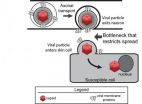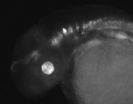(Press-News.org) This press release is available in Spanish.
Spanish legislation on waste management changed in July last year. Until then, the consumer was responsible for the disposal of products. According to Mr Unai Tamayo, economist at the University of the Basque Country (UPV/EHU), the new laws "foment the construction of closed systems, such as in taverns: the container being taken out and subsequently returned. Moreover, when a manufacturer launches a product on to the market, once consumed, the packaging is considered waste, and the responsibility for this now falls on the manufacturer – the new legislation makes these responsibilities clearer". Mr Tamayo has undertaken research focusing on this new perspective of waste management along with Ms Azucena Vicente and Mr Julen Izaguirre, who are also at the same university. They started the work quite some time prior to the enacting of this legislation and studied, amongst other things, how business companies in the Autonomous Community of the Basque Country (CAV-EAE) operate with waste management. The research was published in the Investigaciones Europeas de Dirección y Economía de la Empresa (European Research on Management and Business Economics) journal.
The questionnaires were offered to private enterprise businesses in the CAV-EAE and which had the ISO 14001 certification (corresponding to environmental systems) in December 2006, so that the reasons why they had opted for waste management might be known and if any financial benefits had accrued as a result. Finally, a total of 254 enterprises participated. According to the conclusions, "while having been pioneers in taking this step, the prime motive was the fact that the Law required it or that future legislation would do so. There were no a priori reasons related to ethics or to the market. However, it was subsequently observed that commercial benefits were also obtained, that relations with public administration and suppliers improved, and so on".
Making investments
The research data show clearly that the principal motive making businesses move towards managing waste is legislation. In second and third place of priorities are ethics and image; close to each other but at a considerable distance from the first motive. According to Mr Tamayo, there exists a certain nexus between the legal variable and the ethical one: "If they were not to demand it of us, we would not have a motive to undertake this; but on requiring such compliance, we can see why they do so".
Establishing a system for environmental management has meant numerous achievements for CAV-EAE businesses, highlighted amongst which is the reduction itself of waste and a greater degree of safer elimination. But not only that: the external (public) image of the company is enhanced, as well as relations with the administration. Thus, as highlighted in the research, waste management can be considered to be a marketing tool that creates positive results at a PR level.
The research also points to certain predictions, such as waste management should also result in a reduction in costs. However, the results analysed from the companies have not shown such improvements. In the words of Mr Tamayo, this is due to the fact that results are often based on short-term strategies, without making investments that can bear fruit in the future and, thus, enhancements in this respect cannot be observed currently: "All this requires more resources, both at a material level as at a personal one; a greater effort has to be made. And so, greater investment is also required. There are many businesses which have attempted to incorporate environmental aspects into top management activities; without resources or adjudicating these functions to someone who already has other responsibilities. And, clearly, if you are not prepared to invest, to spend, not much can be done".
Apparently, many companies link internal waste management with a waste of money, the reason why these UPV/EHU researchers believe that it is vital to foment a "change of culture", i.e. not looking at waste management as a mere requisite that has to be complied with by law; but as a differentiating value which gives the business the advantage it needs to compete in its market. And, to this end, it is essential to make investment, and avoid short-term perspectives. "If what we want is to do today and obtain tomorrow, we are not going to see results. Things need to mature", stated Mr Tamayo.
### END
Waste management -- good marketing
The most sustainable Basque enterprises implement waste management for legal reasons, but it ends up enhancing their public image, according to research by the University of the Basque Country
2012-11-05
ELSE PRESS RELEASES FROM THIS DATE:
Princeton researchers identify unexpected bottleneck in the spread of herpes simplex virus
2012-11-05
VIDEO:
Princeton University research suggests that a common strain of herpes virus causes cold sores with only one or two viral particles, resulting in a bottleneck in which the infection is...
Click here for more information.
New research suggests that just one or two individual herpes virus particles attack a skin cell in the first stage of an outbreak, resulting in a bottleneck in which the infection may be vulnerable to medical treatment.
Unlike most viruses that ...
New research suggests standardized booster seat laws could save lives of children
2012-11-05
Boston, Mass, Nov. 5, 2012— A new study by researchers in Boston Children's Hospital's Division of Emergency Medicine indicates that a nationwide standard on booster seat laws for children 4 feet 9 inches and shorter, or up to 8 years old, would save lives. The findings were published online Nov. 5, 2012, in the journal Pediatrics.
Boston Children's researchers reviewed data from Fatality Analytic Reporting System, analyzing child deaths in motor vehicle accidents, looking specifically at whether the crash and resulting deaths or injuries took place in a state with or ...
Computers 'taught' to ID regulating gene sequences
2012-11-05
Johns Hopkins researchers have succeeded in teaching computers how to identify commonalities in DNA sequences known to regulate gene activity, and to then use those commonalities to predict other regulatory regions throughout the genome. The tool is expected to help scientists better understand disease risk and cell development.
The work was reported in two recent papers in Genome Research, published online on July 3 and Sept. 27.
"Our goal is to understand how regulatory information is encrypted and to learn which sequence variations contribute to medical risks," says ...
Superstorm animation
2012-11-05
A computer animation produced by University of Delaware researchers shows the explosive development of Hurricane Sandy, the superstorm and its unusual track. View the animation on the University's UDaily website at http://www.udel.edu/udaily/2013/nov/animation110212.html
Matt Shatley, computer research specialist in UD's College of Earth, Ocean, and Environment (CEOE), assembled the animation by digitally stitching together about 800 infrared images taken by GOES, the Geostationary Operational Environmental Satellite, which keeps a continuous eye on the continental United ...
Japanese family members less likely than others to give CPR for cardiac arrest
2012-11-05
Family members didn't give CPR for cardiac arrests as often as passers-by or friends in a Japanese study presented at the American Heart Association's Scientific Sessions 2012.
Cardiac arrest is the sudden loss of heart function, typically resulting from an abnormal heart rhythm that causes the heart to quiver erratically and stop pumping blood. According to the American Heart Association, effective bystander CPR provided immediately after sudden cardiac arrest can double or triple a victim's chance of survival.
In a review of 547,218 cardiac arrests occurring in 2005-09, ...
New device could allow your heartbeat to power pacemaker
2012-11-05
An experimental device converted energy from a beating heart to provide enough electricity to power a pacemaker, in a study presented at the American Heart Association's Scientific Sessions 2012.
The findings suggest that patients could power their pacemakers — eliminating the need for replacements when batteries are spent.
In a preliminary study, researchers tested an energy-harvesting device that uses piezoelectricity — electrical charge generated from motion. The approach is a promising technological solution for pacemakers, because they require only small amounts ...
Heart disease map of England highlights growing social inequality in older ages
2012-11-05
A study estimating the death rate from heart and circulatory disease in each electoral ward in England has found that despite considerable improvements since the 1980s, the difference between the wealthiest and poorest communities has widened for people over 65.
Mortality from heart and circulatory disease – the leading cause of death in the UK – declined in most places between 1982 and 2006, but for men and women aged 65 or older, the decline was smaller in the most deprived communities, resulting in a wider gap between rich and poor.
The authors, from Imperial College ...
Smallholder farmers need improved stake in Nile's development
2012-11-05
ADDIS ABABA (5 NOVEMBER 2012)—A new book finds that the Nile river, together with its associated tributaries and rainfall, could provide 11 countries—including a new country, South Sudan, and the drought-plagued countries of the Horn of Africa—with enough water to support a vibrant agriculture sector, but that the poor in the region who rely on the river for their food and incomes risk missing out on these benefits without effective and inclusive water management policies.
The Nile River Basin: Water, Agriculture, Governance and Livelihoods, published by the CGIAR Challenge ...
Cardiac bypass surgery superior to non-surgical procedure for adults with diabetes and heart disease
2012-11-05
Adults with diabetes and multi-vessel coronary heart disease who underwent cardiac bypass surgery had better overall heart-related outcomes than those who underwent an artery-opening procedure to improve blood flow to the heart muscle, according to the results from an international study. The research was supported by the National Heart, Lung, and Blood Institute (NHLBI), part of the National Institutes of Health.
The study compared the effectiveness of coronary artery bypass graft (CABG) surgery with a non-surgical procedure known as percutaneous coronary intervention ...
Penn Medicine contest maps 1,400 lifesaving AEDs via crowdsourcing contest fueled by smart phones
2012-11-05
LOS ANGELES – A crowdsourcing contest that sent hundreds of Philadelphians to locate and catalog the locations of AEDs throughout the nation's fifth largest city led to the identification of more than 1,400 automated external defibrillators in public places, according to a study from researchers from the Perelman School of Medicine at the University of Pennsylvania that will be presented today at the American Heart Association's Scientific Sessions 2012 (Abstract #17478). The efforts of these "citizen scientists" are expected to help provide crucial data to ensure quick ...
LAST 30 PRESS RELEASES:
Numbers in our sights affect how we perceive space
SIMJ announces global collaborative book project in commemoration of its 75th anniversary
Air pollution exposure and birth weight
Obstructive sleep apnea risk and mental health conditions among older adults
How talking slows eye movements behind the wheel
The Ceramic Society of Japan’s Oxoate Ceramics Research Association launches new international book project
Heart-brain connection: international study reveals the role of the vagus nerve in keeping the heart young
Researchers identify Rb1 as a predictive biomarker for a new therapeutic strategy in some breast cancers
Survey reveals ethical gaps slowing AI adoption in pediatric surgery
Stimulant ADHD medications work differently than thought
AI overestimates how smart people are, according to HSE economists
HSE researchers create genome-wide map of quadruplexes
Scientists boost cell "powerhouses" to burn more calories
Automatic label checking: The missing step in making reliable medical AI
Low daily alcohol intake linked to 50% heightened mouth cancer risk in India
American Meteorological Society announces Rick Spinrad as 2026 President-Elect
Biomass-based carbon capture spotlighted in newly released global climate webinar recording
Illuminating invisible nano pollutants: advanced bioimaging tracks the full journey of emerging nanoscale contaminants in living systems
How does age affect recovery from spinal cord injury?
Novel AI tool offers prognosis for patients with head and neck cancer
Fathers’ microplastic exposure tied to their children’s metabolic problems
Research validates laboratory model for studying high-grade serous ovarian cancer
SIR 2026 delivers transformative breakthroughs in minimally invasive medicine to improve patient care
Stem Cell Reports most downloaded papers of 2025 highlight the breadth and impact of stem cell research
Oxford-led study estimates NHS spends around 3% of its primary and secondary care budget on the health impacts of heat and cold in England
A researcher’s long quest leads to a smart composite breakthrough
Urban wild bees act as “microbial sensors” of city health.
New study finds where you live affects recovery after a hip fracture
Forecasting the impact of fully automated vehicle adoption on US road traffic injuries
Alcohol-related hospitalizations from 2016 to 2022
[Press-News.org] Waste management -- good marketingThe most sustainable Basque enterprises implement waste management for legal reasons, but it ends up enhancing their public image, according to research by the University of the Basque Country



